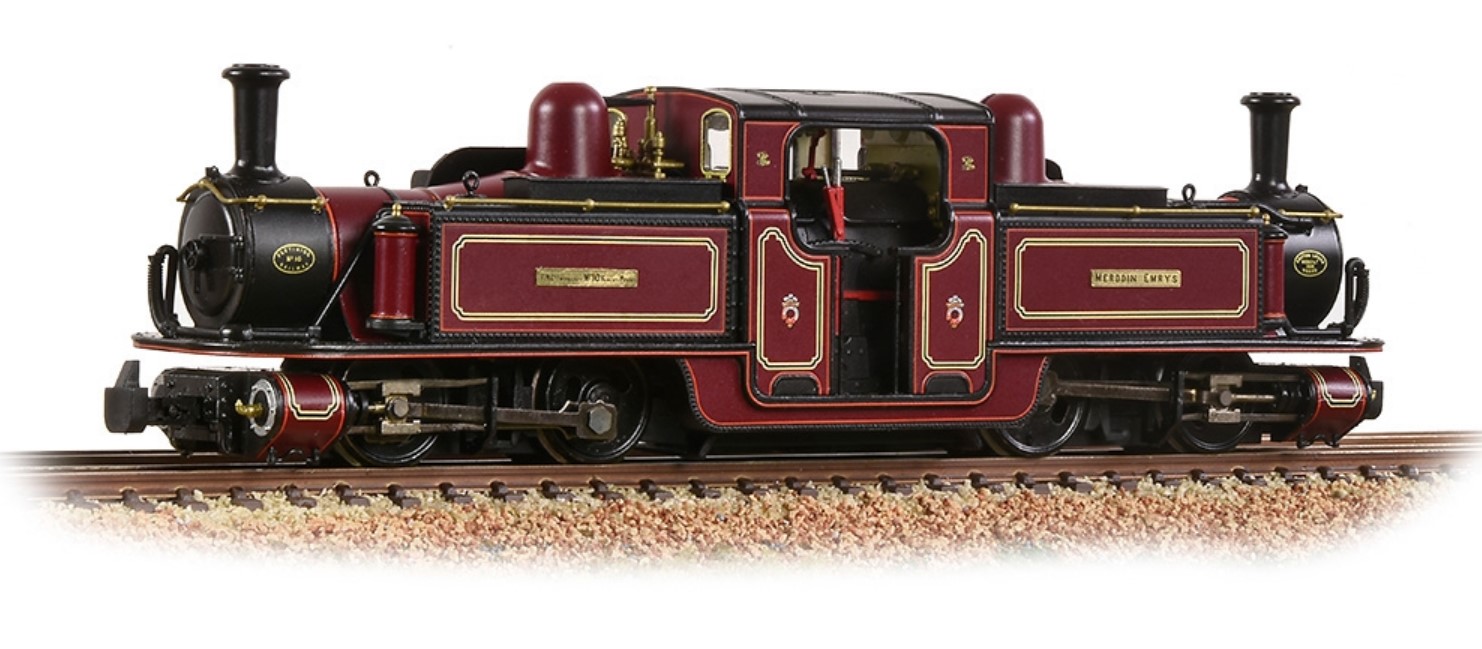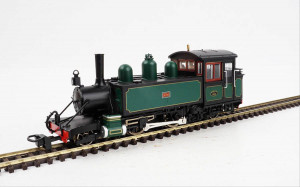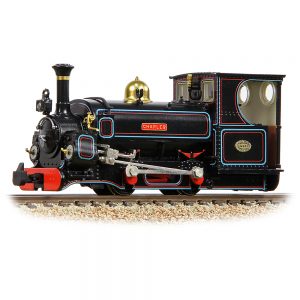Description
The Bachmann Narrow Gauge Double Fairlie locomotive follows in the footsteps of the award winning Baldwin 10-12-D, Bachmann Narrow Gauge’s first OO9 scale locomotive which was released to great acclaim in 2018. Synonymous with the Ffestiniog Railway, the Double Fairlie is an icon of the Narrow Gauge world and this instantly recognisable locomotive is now available in OO9 scale for the first time. The Bachmann Narrow Gauge model incorporates a high level of detail, with tooling designed to accommodate the detail variants seen on the real locomotives in order to produce a model of the highest fidelity, which is brought to life by the exquisite livery application that combines Ffestiniog Railway-specification colours with authentic lining, crests and plates.
The precision moulded bodies are adorned with numerous individual components, including the real brass handrails and the metal tank filler cap rings, along with fine mouldings for parts such as the steam fountain, cab controls and tallow cups. The mechanism is similarly impressive with a twin shaft coreless motor, fitted with twin flywheels, driving both bogies, all-wheel electrical pick up and separate metal bearings fitted to each axle.
Bachmann Narrow Gauge OO9 Scale
Era 2
Pristine Ffestiniog Railway Lined Maroon livery
Running No. 10
Named ‘Merddin Emrys’
Etched Nameplates included
Equipped with a Next18 DCC Decoder Socket – Recommend Decoder item No. 36-567A
Length 123mm
DETAIL VARIATIONS SPECIFIC TO THIS MODEL
Short Side Tanks
Long Belly Tank
Enclosed Cab with Small Cut Out
Single-Piece Handrail on Front/Sides of Smokebox
Smokebox Door Wheel
Vacuum Brakes Fitted
Cylindrical Sand Pots
Coal Space Extension Boards
Capped Chimney
MECHANISM:
Coreless, twin shaft motor with two flywheels providing drive to both bogies
Electrical pickup from all wheels
Separate metal bearings fitted to each axle
Diecast metal running plate
Diecast metal chassis block and bogie towers
Diecast metal gearboxes, with gearing arranged for prototypical running speeds and haulage capabilities
9mm (OO9 narrow gauge) wheels to NEM310 standards with authentic profile and detailing
Coupling pockets to NEM355 standards fitted to each bogie, into which a standard OO9 coupling hook assembly is fitted
Designed to operate on curves of first radius (228.6mm) or greater
DETAILING:
Highly detailed and decorated cab interior including separately fitted regulators and gauge frames
Separately applied details including Tallow Cup Lubricators, Steam Fountain, Sand Pots with turned brass detail (where applicable), Smokebox Dart/Wheel, Vacuum Pipework (where applicable), Brass Handrails and metal Tank Filler Cap Rings.
Each model supplied with a set of authentically decorated etched name plates
DCC:
Next18 DCC decoder interface
Easy-access DCC decoder socket located behind removable panel on underside of model
DOUBLE FAIRLIE HISTORY
The iconic Double Fairlie uses the design of Scottish engineer Robert F. Fairlie which was patented in 1864. The design employs a single boiler carried above a pair of independently controlled pivoting power bogies. The benefits of this design allowed a large locomotive to be built that operates equally effectively in forward and reverse, one which could navigate sharp curves or undulating track unlike rigid wheelbase locomotives and could utilise all its weight for traction – not wasting any on carrying wheels or tenders.
The first Double Fairlie built for the Ffestiniog Railway was completed by George England & Co. of London in 1869. Named ‘Little Wonder’, the locomotive was essentially a pair of 0-4-0 Ffestiniog ‘England’ chassis pivoting under a combined boiler. The success of this locomotive in trials on the Ffestiniog Railway showcased the potential of steam powered narrow gauge railways to a worldwide audience and began a long running association of the Fairlie locomotive and the Ffestiniog Railway that can still be seen today. ‘Little Wonder’ generated so much publicity for Fairlie that in return, he granted the Ffestiniog Railway with unrestricted use of his patented design.
A second Double Fairlie locomotive was commissioned for the Ffestiniog Railway, learning lessons from ‘Little Wonder’, and ‘James Spooner’ was completed by the Avonside Engine Company of Bristol in 1872.
The first Double Fairlie to be built at the railway’s own workshops at Boston Lodge was to be named ‘Merddin Emrys’ after the legendry Welsh Wizard. The order was placed for the frames in 1877 and an erecting shop was built especially for the construction of the loco. It emerged in 1879 and contained many of the features of the Double Fairlie that we all associate the railway with today. ‘Livingston Thompson’ was next to be outshopped by Boston Lodge in 1886, and then followed a 93 year wait for the next, ‘Earl of Merioneth’, which was built in 1979. With limited funds available, ‘Earl of Merioneth’ was finished with a somewhat economical appearance and quickly gained the nickname ‘The Square’ amongst enthusiasts.
‘David Lloyd George’ is the most recent Double Fairlie to be completed, emerging from Boston Lodge in 1992, and all four engines built in-house by the Ffestiniog Railway remain extant. As of 2021 ‘Merddin Emrys’ and ‘David Lloyd George’ are in traffic, ‘Livingston Thompson’ can be found on display in the National Railway Museum, York, and ‘Earl of Merioneth’ is in long term storage. A new locomotive, to be named ‘James Spooner’, is currently under construction and will be the fifth Double Fairlie to be outshopped from the Ffestiniog Railway’s own Boston Lodge works once construction is completed.





